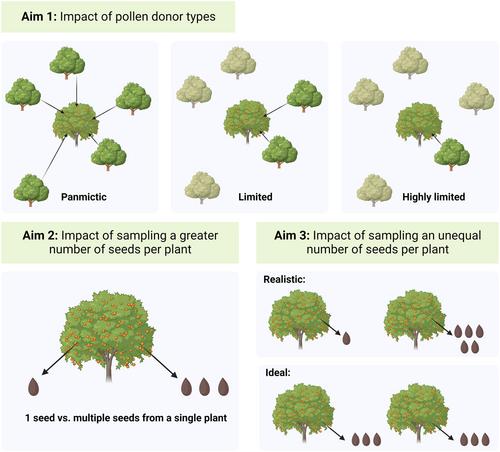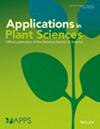Simulating pollen flow and field sampling constraints helps revise seed sampling recommendations for conserving genetic diversity
Abstract
Premise
In this study, we use simulations to determine how pollen flow and sampling constraints can influence the genetic conservation found in seed collections.
Methods
We simulated genotypes of parental individuals and crossed the parentals based on three different ranges of pollen flow (panmictic, limited, and highly limited) to create new seed sets for sampling. We tested a variety of sampling scenarios modeled on those occurring in nature and calculated the proportion of alleles conserved in each scenario.
Results
We found that pollen flow greatly influences collection outcomes, with panmictic pollen flow resulting in seed sets containing 21.6% more alleles than limited pollen flow and 48.6% more alleles than highly limited pollen flow, although this impact diminishes when large numbers of maternal plants are sampled. Simulations of realistic seed sampling (sampling more seed from some plants and fewer from others) showed a relatively minor impact (<2.5%) on genetic diversity conserved compared to ideal sampling (uniform sampling across all maternal plants).
Discussion
We conclude that future work must consider limited pollen flow, but collectors can be flexible with their sampling in the field as long as many unique maternal plants are sampled. Simulations remain a fruitful method to advance ex situ sampling guidelines.



 求助内容:
求助内容: 应助结果提醒方式:
应助结果提醒方式:


